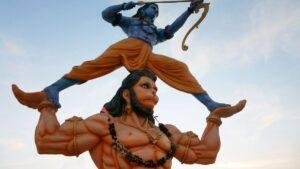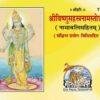Annakut, popularly known as Govardhan Puja, is one of the most prominent Hindu festivals that take place after Diwali. It inaugurates the new Hindu year and is solely dedicated to the expression of gratitude for bountiful natural offerings. The word “Annakut” means “mountain of food,” which represents the thanks being delivered through a grand variety of dishes to deities. Annakut is deeply rooted and culturally and spiritually significant and is observed with much devotion in regions like Gujarat, Maharashtra, and parts of North India.
Date and Time for Annakut
The Annakut celebration is on 2024 during the time of Govardhan Puja, on Saturday, November 2. It is observed as “Mountain of Food,” a festival where devotees prepare diverse dishes as an offering to Lord Krishna and symbolically express gratitude towards nature for its abundance the day following Diwali. Muhurats for Annakut puja:
Pratipada Tithi Begins – 04:46 PM on Nov 01, 2024
Pratipada Tithi Ends – 06:51 PM on Nov 02, 2024
Preparations are usually done by dawn in most places, but the Govardhan Puja and Annakut are done mainly very early in the morning. It continues doing its festival all day in temples as well as homes.
Historical Significance of Annakut

The origins of Annakut are strictly based on Hindu mythology. According to ancient texts, Annakut is associated with the legend of Lord Krishna and the people of Vrindavan. People of Vrindavan used to worship Lord Indra, the god of rain, with food and prayers for good rain and good crops. But to this young Lord Krishna, the village people should pray to Mount Govardhan because it fed them as well as gave them shelter. He convinced the people to worship the mountain and the cows grazing in its pastures.
This made Lord Indra angry, who sent heavy rains and thunderstorms to punish the people of the village. To protect them, Lord Krishna raised up Mount Govardhan with his little finger and provided shelter to the villagers and their cattle under it. This episode lasted for seven days, after which Indra realized his mistake and sought forgiveness. This tradition of Govardhan Puja began as an offering of great food on this very account – thanksgiving for protection and blessings of nature, represented by the mountain.
Key Annakut Rituals and Traditions
While there are many different Annakut rituals and traditions followed across different regions, they all carry the common thread of devotion and gratitude. Here are a few of the major rituals that come with Annakut:
Preparation of Annakut Bhog:
The specialty of Annakut is ‘Annakut Bhog’. Hundreds of kinds of cuisines are prepared in the thousands of numbers to be offered before the deities. Sweets, fruits, vegetables, grains, and many more traditional delicacies form the offerings. These are heaped, signifying a mountain of food as a mark of respect and gratitude towards nature. Then, this elaborate presentation is placed before the deity, especially Lord Krishna and special prayers are offered.
Govardhan Puja Ceremony:
On Annakut, a symbolic Mount Govardhan is worshiped with cow dung, clay, or even food items. It is decorated with flowers and leaves, and covered with food offerings. The devotees perform aarti and circumambulate the symbolic mountain with hymns and songs dedicated to the Lord Krishna. This ritual symbolizes the connecting line between humans and nature and the importance of the integration of all-natural elements.
Annakut Celebrations in Temples:
Annakut is celebrated with huge enthusiasm in temples like Dwarkadhish Temple in Gujarat and ISKCON temples everywhere in the world. The temple prepares an elaborate Annakut with hundreds of food items beautifully decorated in front of the deities. People visit the temples to see the beautifully decorated food offerings and hear special kirtans and bhajans.
Prasad Distribution Process:
Once it is offered, the food becomes blessed, and is served as ‘Prasad’ to the devotees. The ‘Prasad’ act represents the culture of distribution and oneness, which is a part and parcel of Annakut. Considering faith, eating Prasad serves as an act of getting blessings and spiritual elevation for the devotees.
Spiritual Significance of Annakut

Annakut is not just a festival of food, but it is a celebration of divine protection and bounties of nature. The mountain of food symbolizes prosperity and abundance of nature and blessings that cover mother nature’s nurturing resources. Festival teaches appreciation for the food they get and all the other resources Mother Earth provides. It encourages people to be grateful for a good harvest, helps to respect the environment, offers thanks for prosperity, and seeks blessings for prosperity ahead.
Annakuts also epitomize the virtue of humility as reflected in the tale of Lord Krishna humiliating Lord Indra, a gentle reminder that power and pride must not take over our gratitude for nature. The worship of Mount Govardhan also symbolizes the fact that every constituent part of nature mountains to rivers and forests-is a constituent component of human life and has been due some veneration.
Regional Variations in Annakut Celebrations
Whereas the fundamental spirit of Annakut stays the same, the celebration differs from one region to another in India:
- Annakut is celebrated with great pomp and grandeur in Dwarka and Nathdwara temples in Gujarat. Here, it includes all the traditional Gujarati sweets, snacks, and a number of dishes vegetarian. Thousands of the devotees gather in the temples to see them beautifully decorated and to get their blessings for the coming year.
- Other than the Puja related to Annakut, special dishes are also prepared and distributed like ‘Puran Poli’ and other sweets which fall in the traditional category. Govardhan Puja often hangs with this day, where only worship and feeding of cows are the major activities done on this day.
- Seen in the Braj region of Uttar Pradesh, in North India; devotees enact the Govardhan episode by building the mountain and performing circumambulation rituals through the making of miniature models.
Contemporary Significance of Annakut
To sum up, in today’s context, Annakut is a reminder of sustainable living and gratitude to nature. The message to respect and care for nature at the present time is told through the festival itself. The idea of sharing food with others, primarily with needy people, reflects charity and community support, thereby rendering it a time for reflection on the blessings we have, and planning ways by which we can return them to the society to give something back as well.
This day is also utilized for the distribution of food among the poor and community feasts because it reminds one of Annakut, which culminates with regards to the recognition of plenty in our lives and sharing it with others. The festival calls us towards awareness of the consumption of resources and transcends towards an attitude of thankfulness.
Conclusion
The festive traditions of Annakut are beautifully reflected as spiritual and traditional gratitude. It speaks about the bondage between human beings and nature, teaching people to be humble and respectful towards the environment. There is something very deep that a devotee asks for not only blessings but also abundance in life through food offered to the divine and shared among the community. As an appreciation of nature gifts, Annakut remains a celebration that touches the hearts of those who understand the value of gratitude and the joys of giving.



















Add comment